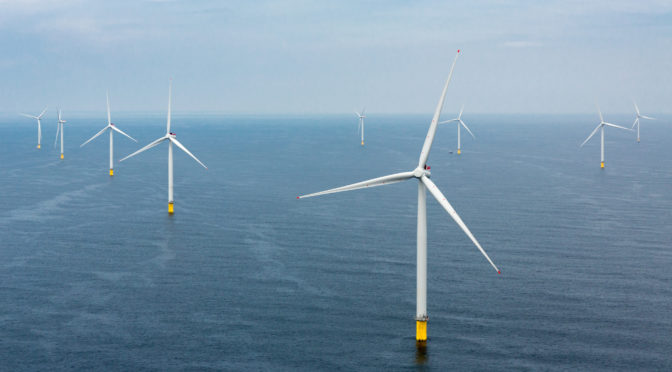The American Wind Energy Association (AWEA) issued the following statement in response to recent inclusion of language related to U.S. offshore wind development in the Department of Defense (DoD) and Department of the Interior (DOI) FY 2020 appropriations bills:
“The offshore wind industry is committed to compatibility with national security and wind projects are rigorously vetted under existing law by DoD, DOI and other agencies. As currently written, Defense and Interior appropriations bills do not recognize that the DoD already exercises statutory authority to review and evaluate any potential impacts to military operations, testing and training related to offshore wind development through the robust Bureau of Ocean Energy Management regulatory process. Instead, these bills needlessly impose duplicative requirements on the DoD that single out offshore wind, creating uncertainty that puts America’s clean energy future at risk. With tens of thousands of U.S. jobs, a $70 billion dollar supply chain opportunity, and the security that comes with additional American clean energy on the line, we urge Congress to reject this needless language.” – Tom Kiernan, AWEA CEO.
As currently written, the DoD appropriations bill requires the DoD to produce a report on offshore wind’s potential impacts to national security and mitigation options. These functions are both part of the DoD’s existing statutory authority and the DoD is engaged in BOEM’s identification of Wind Energy Areas and in the approval of final Construction and Operation Plans for any project built in those Wind Energy Areas. As a result, the creation of this new report would cost staff time, taxpayer money, and create uncertainty for offshore wind development. Similarly, the DOI Appropriations bill includes language that urges “thorough consideration and accommodation of all affected interests including national defense, security, environmental, maritime safety, fisheries, and particularly locally affected community concerns,” which are already considered in the BOEM regulatory process.
Wind energy development has a proven track record of compatibility with military readiness and enhances national security through increased domestic clean energy production. Wind developers have successfully mitigated impacts on radar or training when they exist or do not move forward on projects the DOD identifies as being in conflict with military readiness.
The FY 2020 Defense Appropriations Bill passed out of Committee on Tuesday, May 21st on a vote of 30-22. The offshore wind provision was included in a manager’s amendment, a package of amendments put together by committee leadership that is used to make technical and noncontroversial changes to the bill and report. The manager’s amendment was adopted by voice vote. The FY2020 Interior Appropriations Bill passed out of Committee on Wednesday, May 22nd on a vote of 30-21. Language singling out offshore wind’s stakeholder engagement was included in the manager’s amendment.
At the end of 2018, the U.S. had a total offshore wind pipeline of over 25,000 MW, spanning 10 states off the East and Great Lakes coasts. A December 2018 BOEM lease sale brought in over $400 million to the U.S. Treasury. A recent study from the University of Delaware’s Special Initiative on Offshore Wind presents a nearly $70 billion CAPEX revenue opportunity to businesses in the U.S. offshore wind supply chain. This represents tens of thousands of additional U.S. wind jobs.


